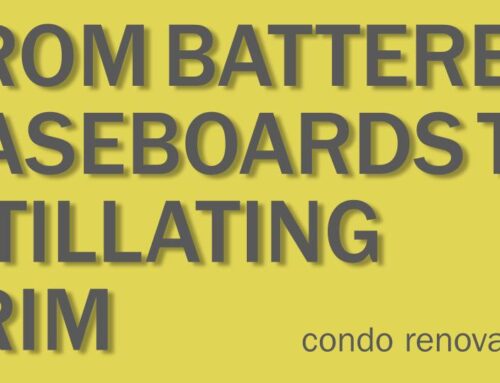As a Condo Board Member or Condo Manager, your residents’ safety should be one of your first concerns. That’s why it’s imperative that you’re regularly looking for and addressing hazards on your building’s property – the potential for slips and falls being one of them.
Although avoiding all resident and guest slips and falls is impossible, there are some ways to mitigate the risk. Addressing safety concerns with the type of flooring found throughout your building is one way of accomplishing this.
Many types of flooring found throughout condo buildings’ elevator landings, parking garage foyers, bathrooms and more can become slippery when wet.
Wondering how to best eliminate the risk of falls caused by slick floor tiles – specifically ceramic tile? Here are three tips to keep in mind when reducing the risk of falls associated with slippery tiles.
Apply a Non- or Anti-Slip Coating
There are plenty of anti-slip coatings available on the market to create traction on ceramic tiles. Although finding an anti-slip coating to use won’t be difficult, choosing one may be!
One of the most popular surface solutions is Glaze Guard. As one of the most sustainable and effective non-slip coatings, Glaze Guard produces a level of grip that is safe in both dry and wet conditions. Better than traditional wax and acrylic finishes, Glaze Guard is categorized as a High Traction, High Slip Resident floor finish that produces virtually no odours. This application – available in high gloss, satin and matte finishes – is a UV stable product that will not yellow.
Other available non- or anti-slip products include Traction Kote 400, SlipDoctors Stone Grip and InvisaTread.
Consider a Non-Slip Tile
If your condo building is due for flooring replacement, choose a non-slip tile to eliminate the need for a non-slip coating application in the future.
Many different ceramic glazed tiles are available with rough, non-slip surfaces. Providing a tile expert with information about where you will be using the flooring can introduce other non-slip flooring options outside of ceramic, too.
The Problem with Etching
Etching combined with an acid based treatment is recommended by certain floor specialists to help with slippery floor tiles.
While etching makes the floors’ surface rougher (and thereby less slippery), there are negative side effects to this treatment method. For one, the floor’s appearance becomes dull and more likely to keep stains due to the sealer layer being destroyed.
Although this treatment method initially creates slip resistance, results from etching are typically short-lived. Daily dirt and sediment begin to break down the treatment and the flooring can become hard to clean – and start to smell. If etching is repeated, floor tiles become even weaker, which can result in the replacement of flooring much earlier than anticipated.
At the end of the day, slippery floors in condo buildings are not only a nuisance, but a serious safety concern, too.
Avoid accidental falls and the possibility of injuries and lawsuits from happening by making your slippery floors safer. The team at Folio Interior Design Group can help! Contact us today for more information.
By Sarah McKenzie





